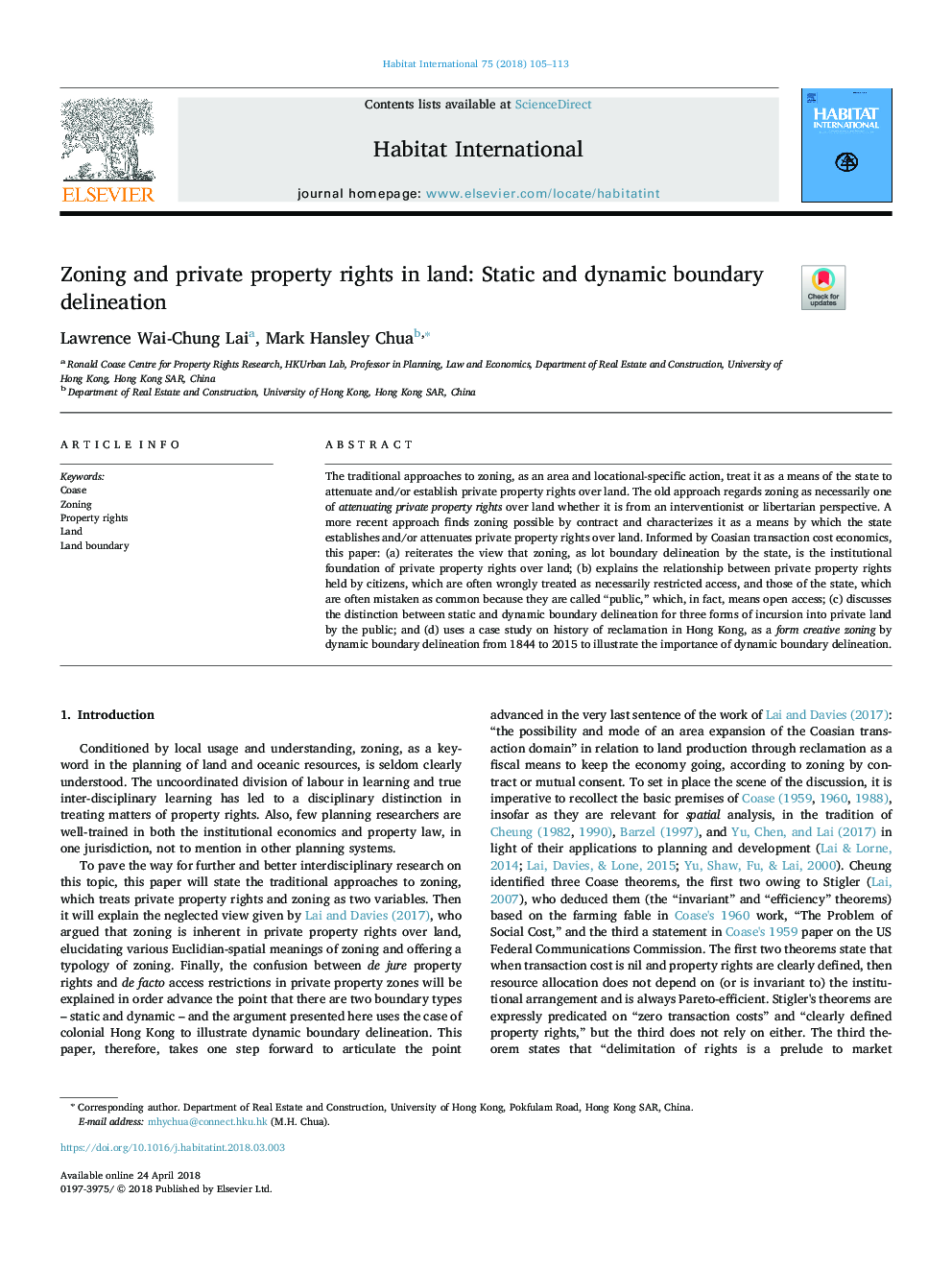| Article ID | Journal | Published Year | Pages | File Type |
|---|---|---|---|---|
| 7455070 | Habitat International | 2018 | 9 Pages |
Abstract
The traditional approaches to zoning, as an area and locational-specific action, treat it as a means of the state to attenuate and/or establish private property rights over land. The old approach regards zoning as necessarily one of attenuating private property rights over land whether it is from an interventionist or libertarian perspective. A more recent approach finds zoning possible by contract and characterizes it as a means by which the state establishes and/or attenuates private property rights over land. Informed by Coasian transaction cost economics, this paper: (a) reiterates the view that zoning, as lot boundary delineation by the state, is the institutional foundation of private property rights over land; (b) explains the relationship between private property rights held by citizens, which are often wrongly treated as necessarily restricted access, and those of the state, which are often mistaken as common because they are called “public,” which, in fact, means open access; (c) discusses the distinction between static and dynamic boundary delineation for three forms of incursion into private land by the public; and (d) uses a case study on history of reclamation in Hong Kong, as a form creative zoning by dynamic boundary delineation from 1844 to 2015 to illustrate the importance of dynamic boundary delineation.
Keywords
Related Topics
Social Sciences and Humanities
Social Sciences
Development
Authors
Lawrence Wai-Chung Lai, Mark Hansley Chua,
